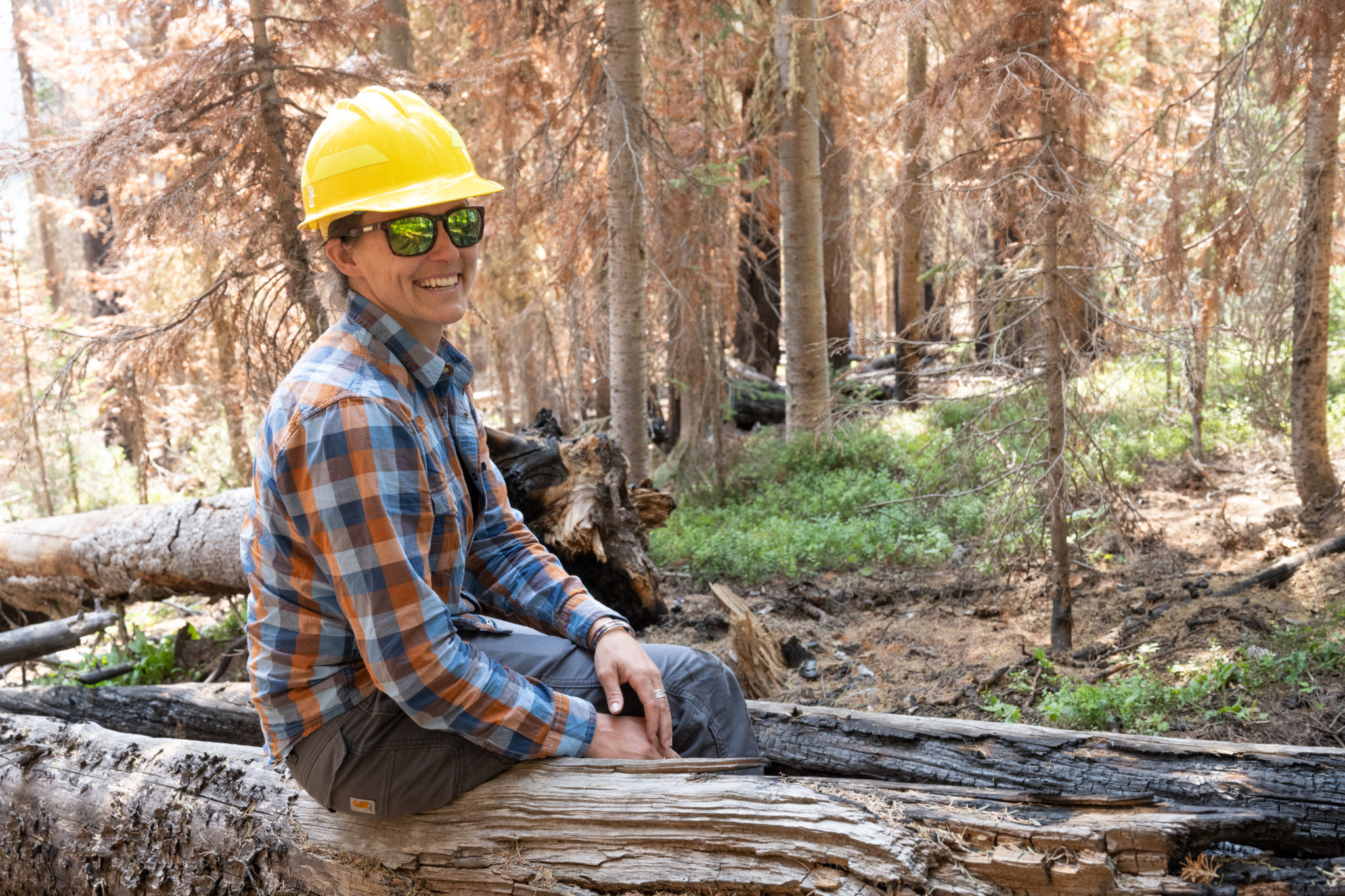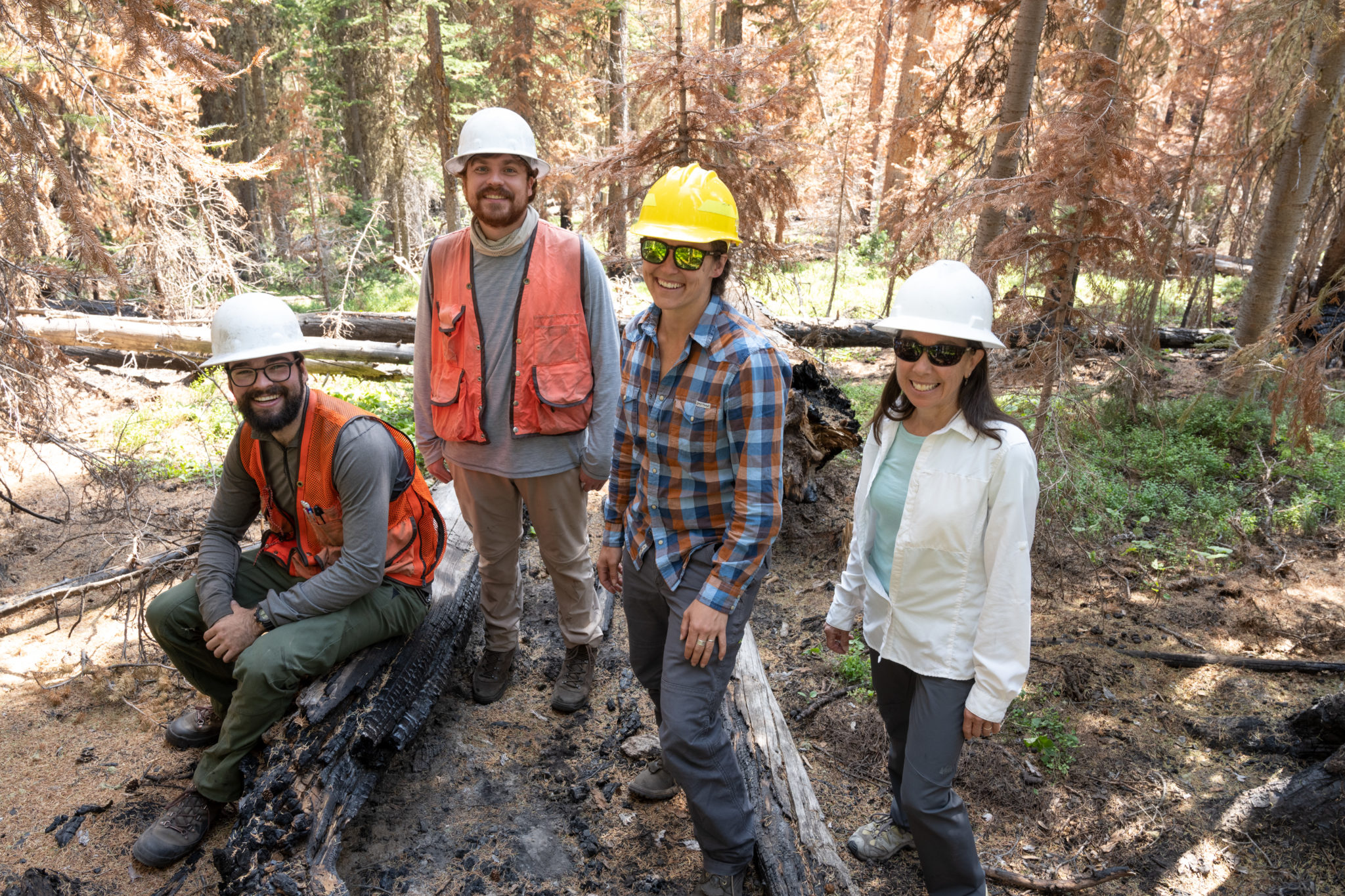
The essence of wildfire and all that it does to the world, and for the world, can be described through a simple quote: “Fire is a bad master but a great servant.”
Colorado State University Assistant Professor Camille Stevens-Rumann has learned the real meaning of this Finnish proverb through her long-standing career in firefighting and wildfire ecology research. When describing the significance of this quote, she mentions how an extreme fire with harsh winds controls communities and is a “bad master.” However, when people have the power to control fire and have it do the things they need, it is the perfect servant.
Before she joined the Department of Forest and Rangeland Ecology and the Colorado Forest Restoration Institute at CSU, Stevens-Rumann was an undergraduate student at Brandeis University in Massachusetts working for the U.S. Forest Service and volunteering for the Rocky Mountain Research Station. She would work as a seasonal wildland firefighter for the USFS throughout the spring and summer for four years before pursuing a career in research and academia.
“As a firefighter, you see a certain location change in a very short period of time,” Stevens-Rumann said. “You don’t fully appreciate that the change you’re watching in that moment is going to last for your whole life. That was really telling and has shaped a lot of the work I do.”
After three years working as a wildland firefighter, Stevens-Rumann now applies her on-the-ground experience to her research and teaching.
“There are so many disturbances a forest experiences,” she said. “But there’s not much that can compete with the intensity of these huge fires. To see how quickly things can change when a fire occurs is pretty crazy and kind of awe-inspiring.”
Teaching and research influences
Stevens-Rumann said that one of her biggest influences for teaching and her research is using an applied perspective. In Summer 2020, she saw one of the worst wildfire seasons in Colorado up close. The experience reminded her of how quickly the normality of wildfire can turn into something completely unprecedented.
“Being a wildland firefighter has helped me understand the real impact and applicability to wildfire management,” Stevens-Rumann said. “From a science perspective and a management perspective, one of the big things that I have learned is involving the communities you’re working with.”
Her expertise has allowed her to be a voice for wildfire researchers and her perspective has been widely featured in the media, including on NPR, CBS News and National Geographic. Though she said she experienced imposter syndrome in the beginning, she subsequently realized her instrumental position, and how her unique background makes her an integral part of the fire ecology community.
“It’s been a really big growth area for me over the last couple of years to learn how to talk about science in a way that everybody can understand,” Stevens-Rumann said. “I feel really honored to represent the fire community and talk about other people’s research because there are so many scientists doing really cool research.”

Recent research
Stevens-Rumann’s research in recent years has been incorporating the implications of climate change and how to adapt to rapidly changing ecosystems.
In 2017, she collaborated with other CSU researchers to study forest vulnerability and resiliency indicators post-wildfire. More recently, she co-authored a study with Jonathan Coop at Western Colorado University and research ecologist Sean Parks, who works for the Rocky Mountain Research Station and the U.S.Forest Service. They analyzed vegetation change across the West in response to an increase in large wildfires.
“It makes me both excited and sad that some of the things that my research has shown is that even over the course of my lifetime these places are changing,” Stevens-Rumann said. “It’s a lot to think about how the places I remember may not look like that for much longer.”
Despite facing the unknown, Stevens-Rumann also said she has hope and excitement for the resiliency of forests and people. Her work continues to bridge the gap between science, management and communities. Making the choice to return to school for her graduate degrees was a way for her to approach wildfire ecology and management with a holistic and applied perspective.
“Spending time with my grad students, other researchers and technicians in the woods is very rewarding,” Stevens-Rumann said. “We can discuss science more organically, see whole new research ideas form from our discussion, and experience the beauty that are our forests.”